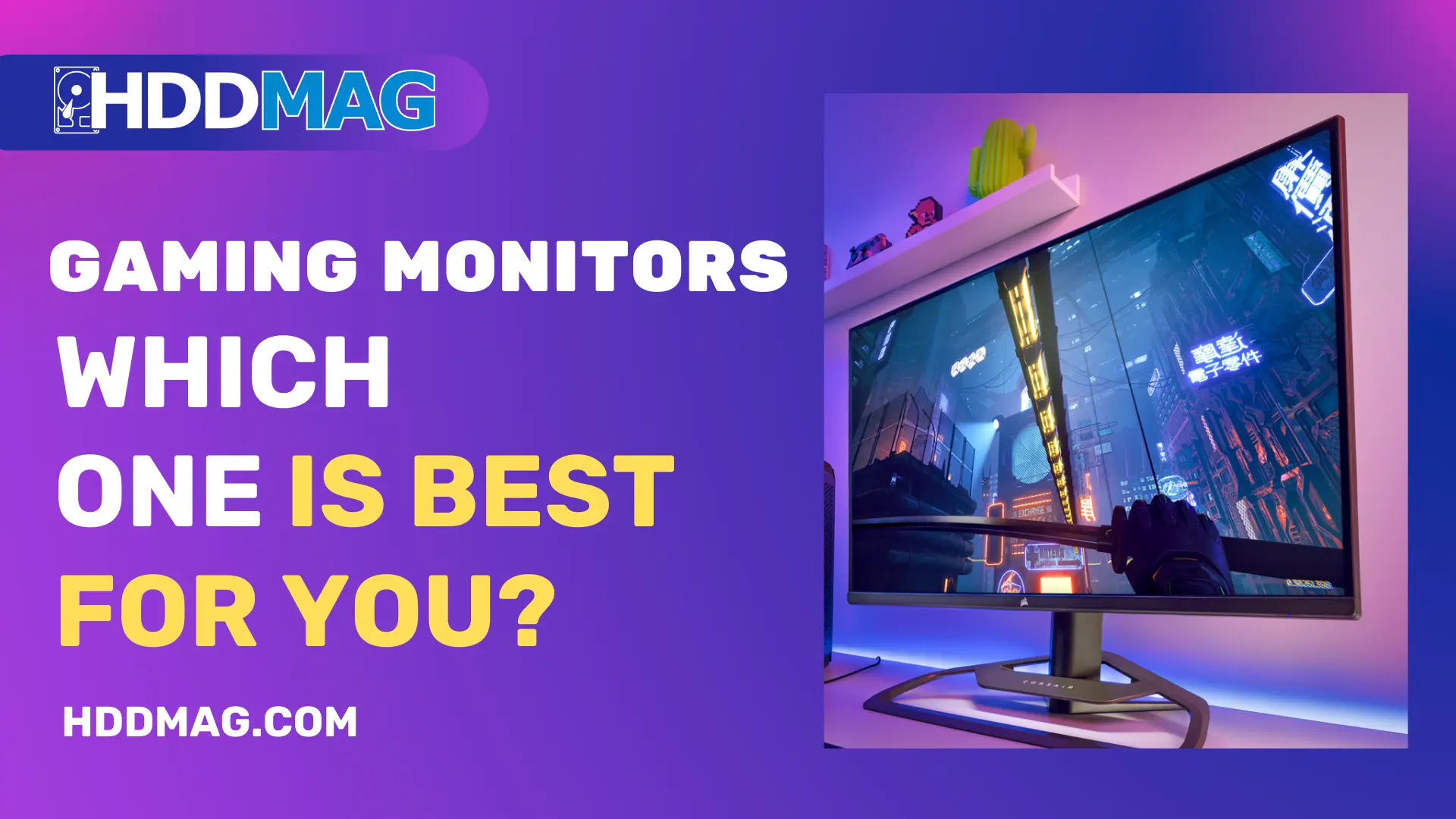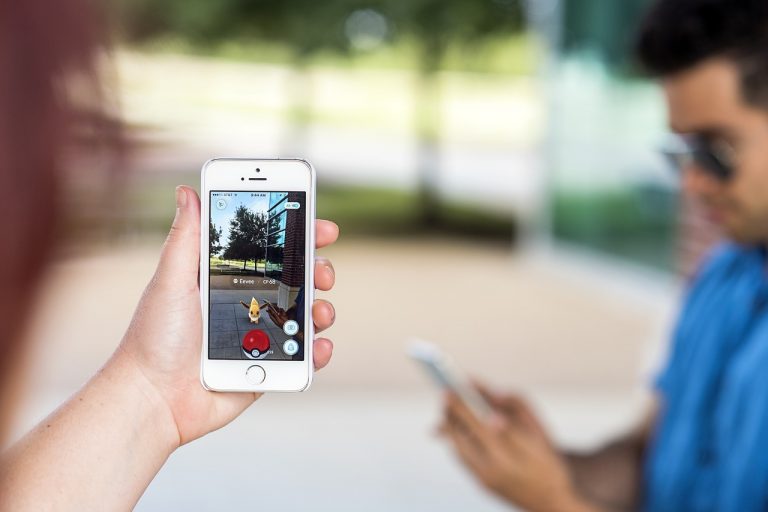The Best Size of Monitor for Gaming
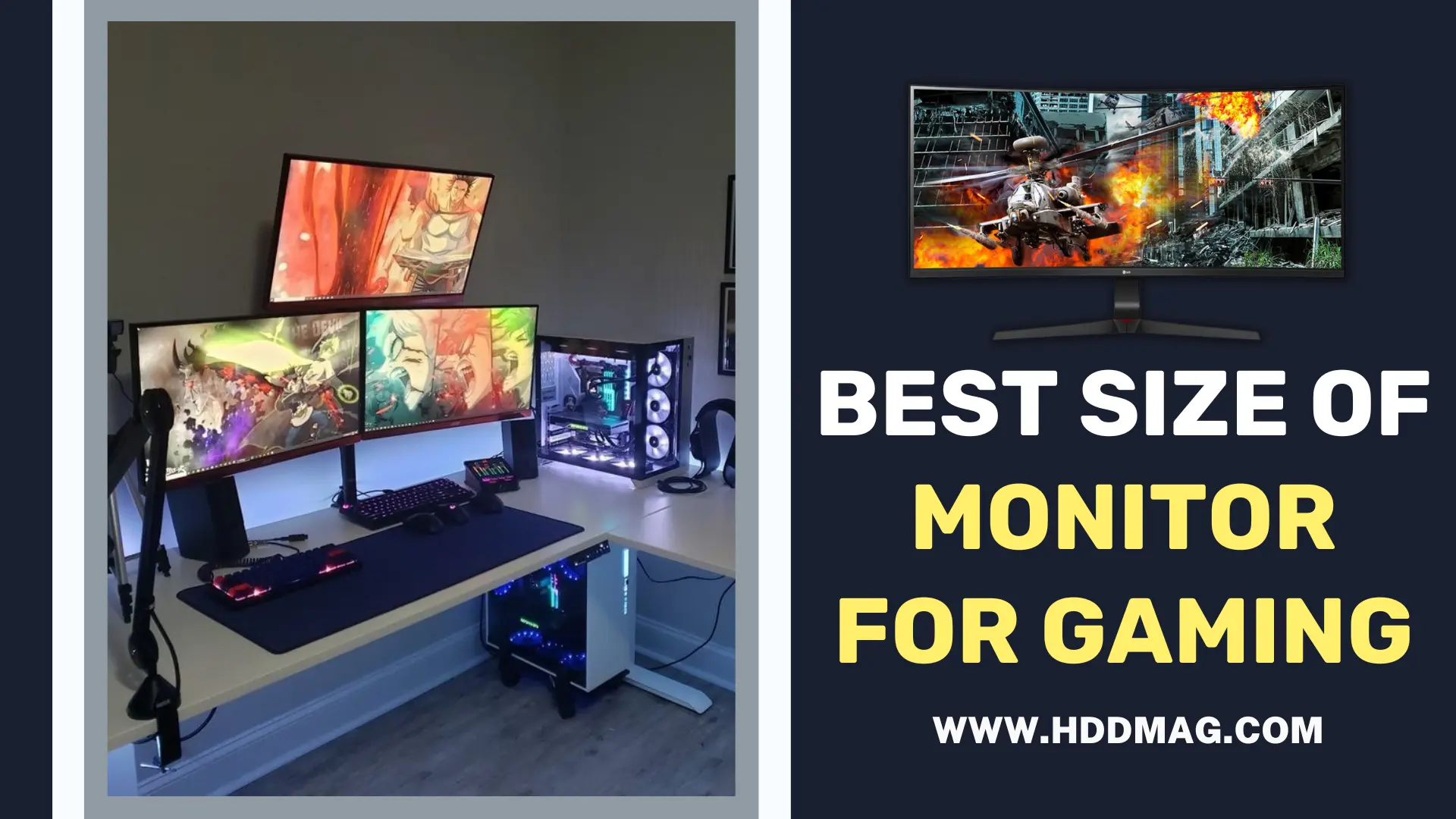
It is no secret that many gamers are obsessed with their hobby. They want the best graphics, the best sound, and the best experience possible. When it comes to picking out the right gaming monitor, there are a lot of factors to consider. But one of the most important is size. So what is the best size of a monitor for gaming? What are the pros and cons of large or small monitors?
We will discuss these in this article.
What Are the Various Sizes of Gaming Monitors?
There are many different sizes of gaming monitors on the market. The most common sizes are 12 to 17 inches, 24 to 25 inches, 27 inches, and 32 to 38 inches. However, there are also large and super ultrawide gaming monitors available.
The smallest gaming monitors are 12 to 17 inches. These are made for people who have limited space or who want a smaller monitor. The most common size is 24 to 25 inches, which is made for people who want a medium to sized monitor.
The largest gaming monitors are 34 to 38 inches. These are made for people who want a large monitor or who have a lot of space. Then there are the super ultrawide gaming monitors, which are becoming increasingly popular thanks to their panoramic view and high resolution.
Various Sizes of Monitors and Their Effects on Gaming
A monitor is an electronic visual display that presents text, images, moving graphics, and video. Monitors are used with personal computers, video game consoles, and other electronic devices. There are various sizes of monitors on the market and each size has its own effect on gaming.
A computer’s monitor is one of the most important factors when it comes to gaming. The size of the monitor can determine how good the graphics look and how immersive the game feels. Small monitors can be good for older games or for games that don’t require as much detail, but for newer games or games that have high-resolution graphics, a larger monitor is necessary.
Larger monitors can provide a more immersive gaming experience by taking up more of your field of vision. They also tend to have better graphics than smaller monitors. But are they the best?
The Benefits of a Large Monitor for Gaming
Having a large monitor for gaming can provide you with many benefits.

A larger monitor gives you more real estate on the screen, which can be helpful in games that require a lot of movement. It also allows you to have a higher resolution, providing you with a sharper image and more detail. Third, a large monitor is great for gaming because it allows you to see more of the game world at once, giving you an edge in competitive games. Additionally, a large monitor typically has a faster response time than smaller monitors, meaning that the image will be updated faster and there will be less lag time between when you move and when the image changes on the screen.
A large monitor is also perfect for gaming because you have more space to work with. This means you don’t have to scroll as much and can see more of the game at once. A large monitor also allows you to set your resolution higher, making the images on the screen look sharper and clearer.
Finally, when playing a game, having a lot of real estate on the screen can give you an advantage over your opponents, since you’ll be able to see more of what’s going on around you. This means that you can have more of the game on the screen at one time, which can improve your situational awareness. In addition, a large monitor can make it easier to spot enemies and other important objects in the game world.
The Disadvantages of a Large Monitor for Gaming
When it comes to gaming, many gamers believe that having a large monitor is the key to a great experience. After all, as we have shown above, the bigger the screen, the more immersive the game will be. However, there are some disadvantages to using a large monitor for gaming.
First of all, large monitors can be expensive. They can also take up a lot of space on your desk, which can be inconvenient if you’re limited on space. Additionally, large monitors can be heavy and difficult to move around.
Another disadvantage of using a large monitor for gaming is that it can be difficult to see everything that’s going on in the game. With such a large screen, you may have to sit further away from it than you would with a smaller monitor, which can impact your gameplay.
The Benefits of a Small Monitor for Gaming
There are many benefits to using a small monitor for gaming. Firstly, small monitors are typically more affordable than larger ones. This makes them a budget friendly option. They also take up less desk space, which is ideal for cramped gaming rooms or offices. This is great if you don’t have a lot of room to work with or if you want to keep your gaming area tidy.
Additionally, small monitors require less electricity and graphics power than larger monitors, making them a great choice for gamers on a budget. A small monitor can also be easier to use than a large one. This is especially true if you are new to gaming and aren’t used to using a mouse and keyboard, or to looking at different areas of the game once. A smaller monitor puts everything in the game in an area that can be covered by your eyes at one glance.
Finally, small monitors for gaming are often easier to transport and set up than large monitors, making them perfect for LAN parties and tournaments.
The Disadvantages of a Small Monitor for Gaming
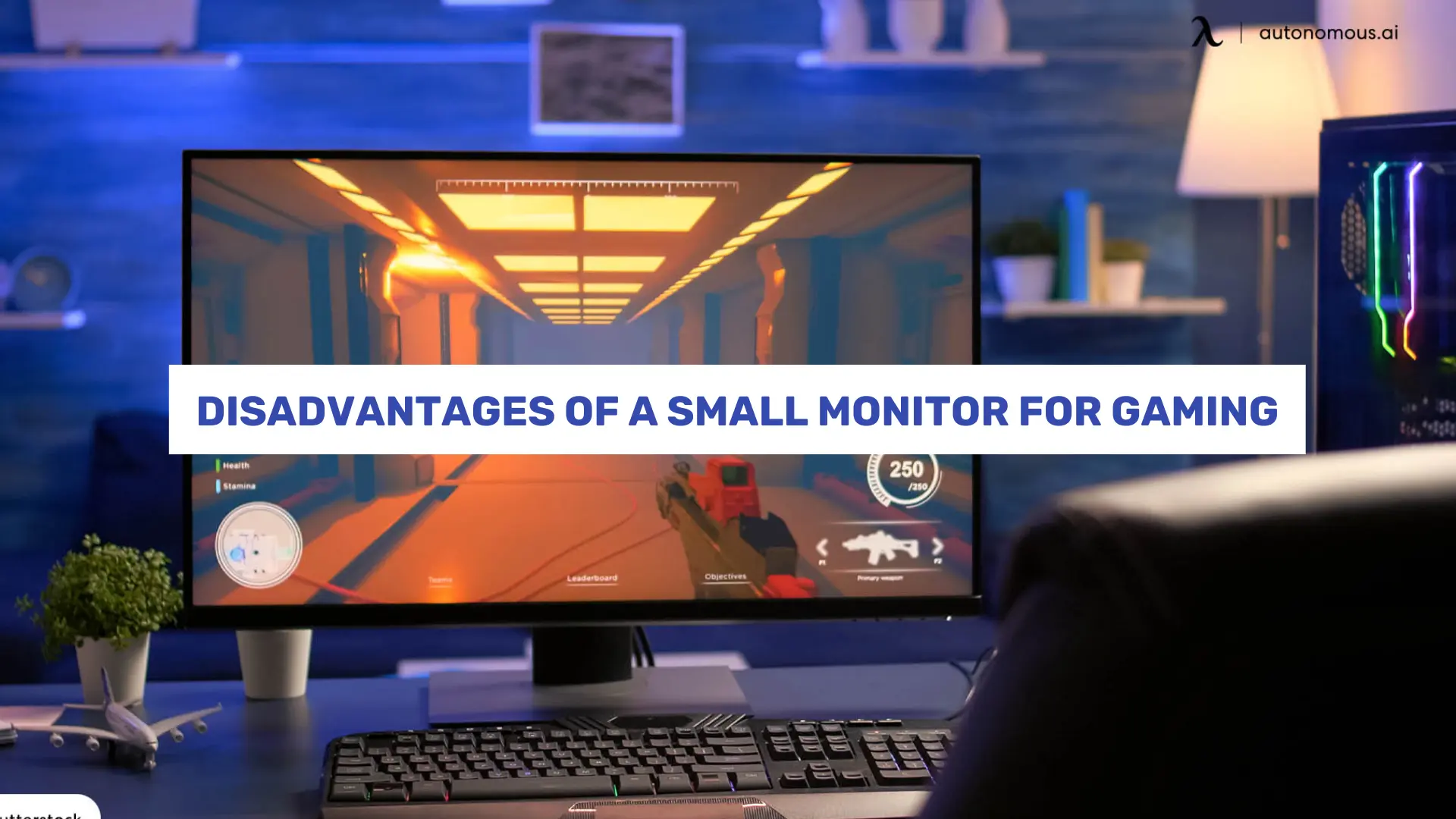
When it comes to gaming, bigger is better. This is especially true when it comes to monitors. A large monitor provides a more immersive gaming experience, giving you a better view of the action. Small monitors can’t provide this same level of immersion, making them a poor choice for gaming.
Small monitors also have other disadvantages when it comes to gaming. They often have lower refresh rates, which can lead to image lag and choppy gameplay. They also tend to have narrower viewing angles, meaning that you’ll have to sit directly in front of the monitor in order to see the best image quality. This can be uncomfortable and can also lead to eye strain.
Additionally, smaller monitors tend to have lower resolutions than larger monitors, so images may not look as sharp. In addition, smaller monitors may not provide enough screen space for certain games. Another disadvantage of using a small monitor for gaming is that they often have fewer ports than larger monitors.
So, ultimately, if you’re looking for the best possible gaming experience, you should avoid small monitors and opt for a model that is at least 24 inches in size.
So, What Size of Gaming Monitor Do You Need?
When it comes to gaming, a good monitor is key. As with other factors, with respect to size, there are many factors to consider before making a purchase. While this may seem like an easy question, the answer to this will depend on your gaming needs and goals. In the following subheading, we will touch on these and help you make an informed decision about the size of gaming monitor you need.
Different Gaming Monitor Sizes for Different Purposes
A. The Best Size of Monitor for Gaming on a Budget
When it comes to monitors, size does matter – at least when it comes to gaming on a budget. The sweet spot for a great gaming experience while keeping your costs down is a 27-inch monitor with a 16:9 aspect ratio. This size is large enough to give you the immersive experience you want while still keeping the overall cost of the monitor lower than those with larger screens. Another factor to consider when choosing a gaming monitor on a budget is refresh rate. Most monitors in this price range have a 60 Hz refresh rate, which is more than adequate for most gamers. If you are looking for something that will give you an edge in your gameplay, however, then you may want to consider spending a bit more on a model with a higher refresh rate.
B. The Best Size of Monitor for Gaming for Console Gamers
It’s no secret that many gamers prefer using a console to playing games on a computer. And when it comes to gaming on a console, the size of your monitor can make all the difference. Many people believe that the best size of monitors for gaming is 27 inches. This model provides just enough screen real estate to immerse you in your game, without taking up too much space on your desk or becoming too cumbersome to move around. Plus, with newer technologies like 4K and HDR, console gamers can now enjoy even better visuals on a 27-inch monitor.
While you may want to look for a larger monitor a console gamer, 27 inches is the next step up and will provide an even better gaming experience. Anything larger than 27 inches is likely overkill and may not offer any additional benefits.
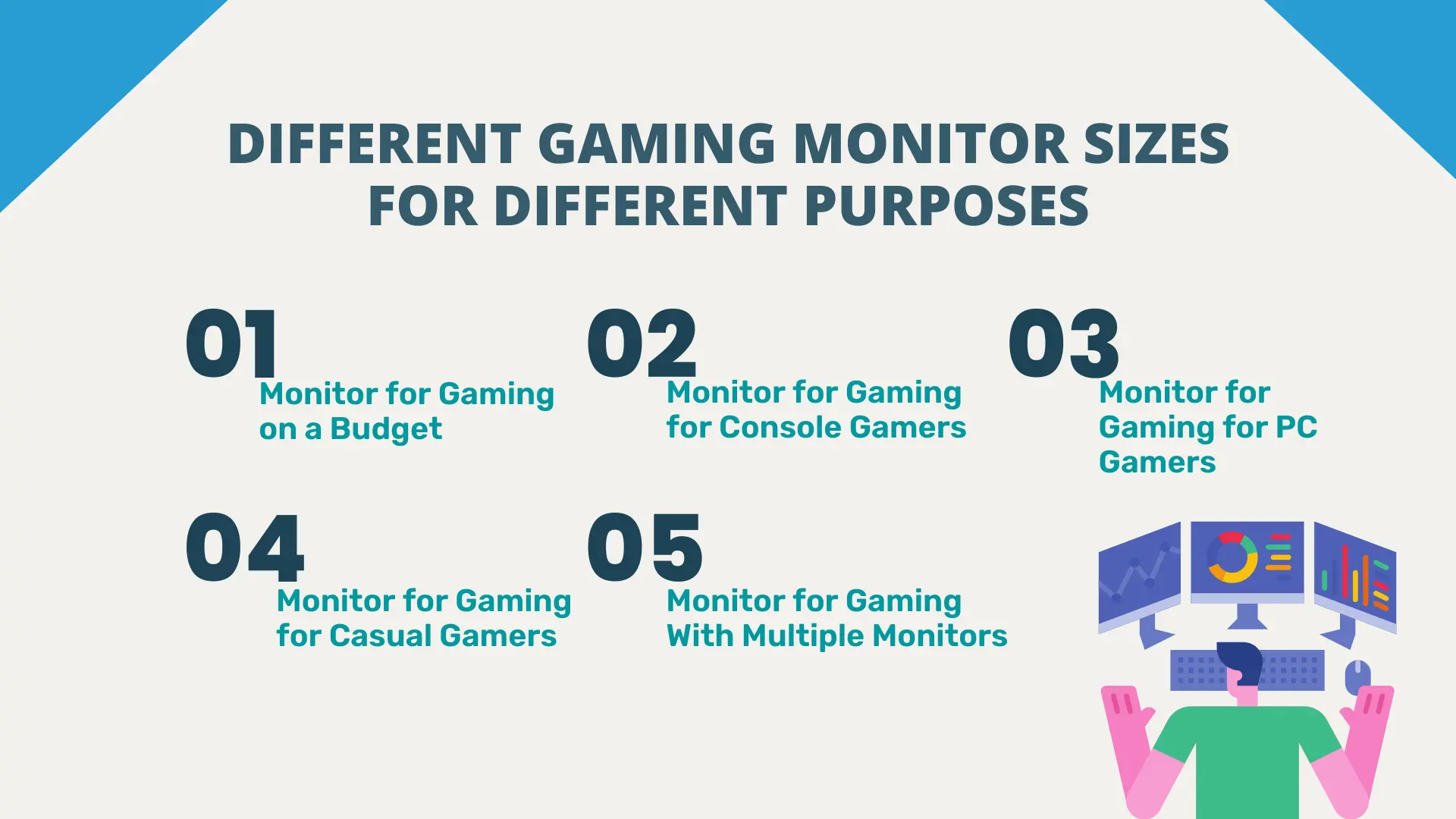
C. The Best Size of Monitor for Gaming for PC Gamers
PC gamers have a wide variety of monitors to choose from when it comes to gaming. The size of the monitor can be a critical factor in determining the level of enjoyment and satisfaction you get from gaming. Some people believe that the best size for a PC gaming monitor is between 24 and 27 inches.
One reason that this range is often cited as being ideal for PC gaming is that it provides plenty of screen real estate without becoming too cumbersome or difficult to use. Another benefit of monitors within this size range is that they are typically more affordable than larger models.
As many models abound, when looking for a gaming monitor in this size range, it’s important to consider the resolution and refresh rate as well – both of which are important factors in ensuring an optimal gaming experience.
D. The Best Size of Monitor for Gaming for Casual Gamers
Casual gamers really care less if they win or lose a game; they just play for fun or to pass time. As such, there is no definitive answer to this question as it largely depends on personal preferences. Some people prefer a larger monitor for gaming, while others find that a 24 or 25 inch screen is a perfect size. Ultimately, it comes down to what feels most comfortable for the individual.
Many gamers might prefer a 24 or 25 inch monitor because it provides a good balance of screen real estate and portability. It is large enough to provide an immersive gaming experience, but also small enough to easily transport between different locations. Alternatively, some people might prefer a very large monitor because it gives them more screen space to work with. This can be especially helpful for multitasking or with two players playing multiple games at once.
Ultimately, the best size of monitors for gaming for casual gamers comes down to personal preference. Some people prefer a smaller screen while others prefer a larger one. Hence, if you are a casual gamer, you may buy any monitor of your choosing.
E. The Best Size of Monitor for Gaming With Multiple Monitors
Gaming with multiple monitors used to be a luxury for PC gamers, reserved for those with high-end gaming rigs and the accompanying wallets. But with the release of affordable ultrawide monitors, nearly anyone can enjoy the benefits of gaming with multiple monitors.
But what is the best size monitor for gaming with multiple monitors? This question is difficult to answer because it depends on a variety of factors, such as budget and personal preferences. However, most gamers agree that a 24 inch ultrawide monitor is the best size for gaming with multiple monitors. If you have a super limited budget, or if you prefer smaller monitors, there are also 20 inch monitors available that are great for multiple monitor gaming.
These sizes provide a good amount of screen space without taking up too much desk space. They also work in tandem to provide plenty of screen real estate without taking up too much space on your desk.
An ultrawide monitor is great for multiple monitor gaming because it offers a much wider field of view than traditional widescreen monitors. This makes it easier to keep track of your enemies and your surroundings in first-person shooters and other fast-paced games.
Other Factors To Consider When Choosing a Gaming Monitor
A. Resolution Matters: The Right Resolution for Gaming
When you’re looking for a new gaming monitor, resolution is one of the key factors to consider. But not all resolutions are created equal – some are better suited for gaming than others. Here’s a look at the different resolutions and what they mean for gamers.
1080p is the most common resolution, and it’s perfect for most gamers. It offers great image quality and performance without taking up too much space on your screen. 1440p is another popular option, offering even better image quality than 1080p. For gamers who want the best possible experience, 4K or 8K is the way to go. It offers incredible detail and clarity, making it the perfect choice for high-end games. Have a look at, the detail about 8K monitors.
Of course, not everyone needs or wants a 4K monitor.
B. Refresh Rate Matters: The Right Refresh Rate for Gaming
Gamers know that a good gaming monitor is key to an optimal gaming experience. In addition to resolution, refresh rate is another factor to consider when choosing a gaming monitor. Many gamers are unaware of the importance of refresh rate and choose a monitor based on resolution alone. This can be a costly mistake because a high-resolution monitor with a low refresh rate can actually decrease your gaming performance.
A monitor’s refresh rate is the number of times per second that it can update the image on the screen. The higher the refresh rate, the smoother the image will be. When choosing a gaming monitor, you should look for one with a high refresh rate of at least 120 Hz. Anything below this may cause screen tearing and stuttering during gameplay.
C. Panel Type Matters: The Right Panel Type for Gaming
A monitor’s panel type is another important factor to consider when choosing a gaming monitor. Some panel types are better for gaming than others. TN panels are the most popular type of panel for gaming monitors because they offer the best response time and refresh rate. They are also the cheapest option. However, they do not offer the best color accuracy and viewing angles. IPS panels offer better color accuracy and viewing angles than TN panels, but they have slower response times and refresh rates. VA panels offer the best of both worlds with fast response times and refresh rates, as well as good color accuracy and viewing angles. However, they are more expensive than TN panels, but they may be worth the investment for serious gamers.
D. Connectivity Matters: The Right Connectivity for Gaming
Another one of the important factors to consider is connectivity. The right connectivity can make or break your gaming experience. In order to get the most out of your gaming monitor, you need to make sure that it has the right ports and connectors.
HDMI ports are the most common type of connector for gaming monitors. They allow you to connect your monitor to your gaming console or PC. If your gaming monitor doesn’t have HDMI ports, you may need to use an adapter. DisplayPort connectors are also common in gaming monitors. They offer a higher bandwidth than HDMI and often support 4K resolution. If your graphics card doesn’t have a DisplayPort connector, you’ll need to use an adapter.
Some gamers also prefer monitors with USB ports. This allows them to connect their controllers and other devices directly to the monitor.
E. Extras Matter: The Right Extras for Gaming
Choosing the right gaming monitor is not just about the specs of the monitor itself. What kind of extras does the monitor come with and how useful are they? Some monitors come with built-in speakers, for example, which can be great for gamers who don’t want to clutter their desk with extra speakers. As shown above, others come with a variety of ports, including HDMI, DisplayPort, and USB ports, which can be very useful for connecting multiple devices to the monitor.
Gamers should also consider whether they want a monitor that comes with a built-in stand or if they want to buy a separate stand. If they choose a monitor with a built-in stand, they need to make sure that it is adjustable so that they can get the perfect viewing angle. If they choose a separate stand, they need to make sure that it is compatible with their monitor.
Conclusion
In conclusion, there are many different sizes of monitors on the market, and each size has its own advantages and disadvantages for gaming. Monitors that are 12 to 17 inches wide are good for older games or for games that don’t require a lot of graphics power. They are also good for people who want a small, lightweight monitor.
Monitors that are 34 to 38 inches wide are good for most current games, and they have a high pixel density so you can see more on the screen. However, they can be a bit too large for some people to carry around. Monitors that are 27 inches wide are great for gaming because they have a high pixel density and they’re big enough to provide an immersive experience, but they’re still portable enough to move around if needed.
Additionally, there are many factors to consider when choosing a gaming monitor. Some of the most important factors include the resolution and refresh rate. Other factors to consider include the type of connector, viewing angle, and brightness. When choosing a gaming monitor, it is important to consider all of these factors to ensure that you are getting the best possible gaming experience.
Thanks for reading!





